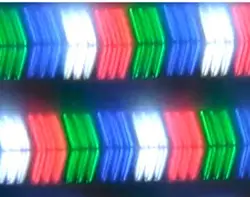Monitors with 5K (UHD) resolution are not the typical standard resolution, but when they first appeared, companies like DELL introduced their own terms, such as “UHD Plus” or “Ultra UHD,” to describe them—similar to UHD but with a higher resolution.
5K UHD Specifications
Monitors with a horizontal pixel count 5120 are generally considered 5K monitors. The vertical resolution can either be 2160 or 2880 pixels, with common 5K resolutions being 5120 × 2160 and 5120 × 2880. Many 21:9 aspect ratio monitors are built with these resolutions today, although several other resolutions also qualify as 5K.
| Resolution | Aspect Ratio | Comments |
|---|---|---|
| 5120 × 1440 | 32∶9 | Equivalent to two QHD (2560 × 1440) images side-by-side |
| 5120 × 2160 | 64∶27 | Equivalent to 4K UHD (3840 × 2160) extended in width by 33%; double the size of 2560 × 1080 in each dimension |
| 5120 × 2560 | 2∶1 (18∶9) | – |
| 4800 × 2700 | 16∶9 | Five times the size of 960 × 540 in each dimension |
| 5120 × 2700 | 256∶135 (≈17∶9) | Same aspect ratio as DCI 2K (2048 × 1080) and DCI 4K (4096 × 2160) formats |
| 5120 × 2880 | 16∶9 | Double the size of QHD (2560 × 1440) in each dimension |
| 5120 × 3200 | 8∶5 (16∶10) | Double the size of 2560 × 1600 in each dimension |
| 5120 × 3840 | 4∶3 | Five times the size of 1024 × 768 in each dimension |
| 5120 × 4096 | 5∶4 | – |
The critical distinction between a UHD+ display (5120 × 2160) and a standard UHD display (3840 × 2160) is the increased number of horizontal pixels. Both resolutions share nearly the exact vertical pixel count, but UHD+ offers more horizontal pixels, which is ideal for widescreen monitors. However, displays with this resolution were not initially designed specifically for widescreen use.
History of 5K UHD (Ultra UHD)
The 5K resolution was initially developed for OLED and LED displays, where additional pixels were added to improve image quality. In OLED displays, a fourth white pixel was introduced to increase brightness and extend the life of the color pixels. For example, Samsung’s first OLED TV, the S9, released in 2014, had a 5K resolution. Similarly, Sharp offered displays with a fourth yellow pixel.
It’s important to understand that a color image in a video is formed from three primary colors: red, green, and blue (RGB), which together create a full spectrum of hues. In a standard UHD display, the horizontal resolution (3840) is divided into three standard colors, resulting in 1280 pixels per color. However, in displays with four subpixels, adding a fourth pixel reduces the number of pixels for each color to 960 (3840 ÷ 4), which technically does not meet actual UHD standards. When displaying UHD content on such screens, every fourth pixel is skipped, resulting in lower image quality. The processor compensates for this with algorithms that reconstruct the image with fewer pixels.
The advent of 5K displays with 5120 horizontal pixels solved this problem by maintaining true UHD quality without missing a single pixel.
With the proliferation of ultra-wide monitors with aspect ratios of 21:9 and larger, the use of 5K resolution has increased the horizontal pixel density. Of course, adapting to this resolution requires additional video processing, but it is perfectly fine when the monitor is divided into two screens.







